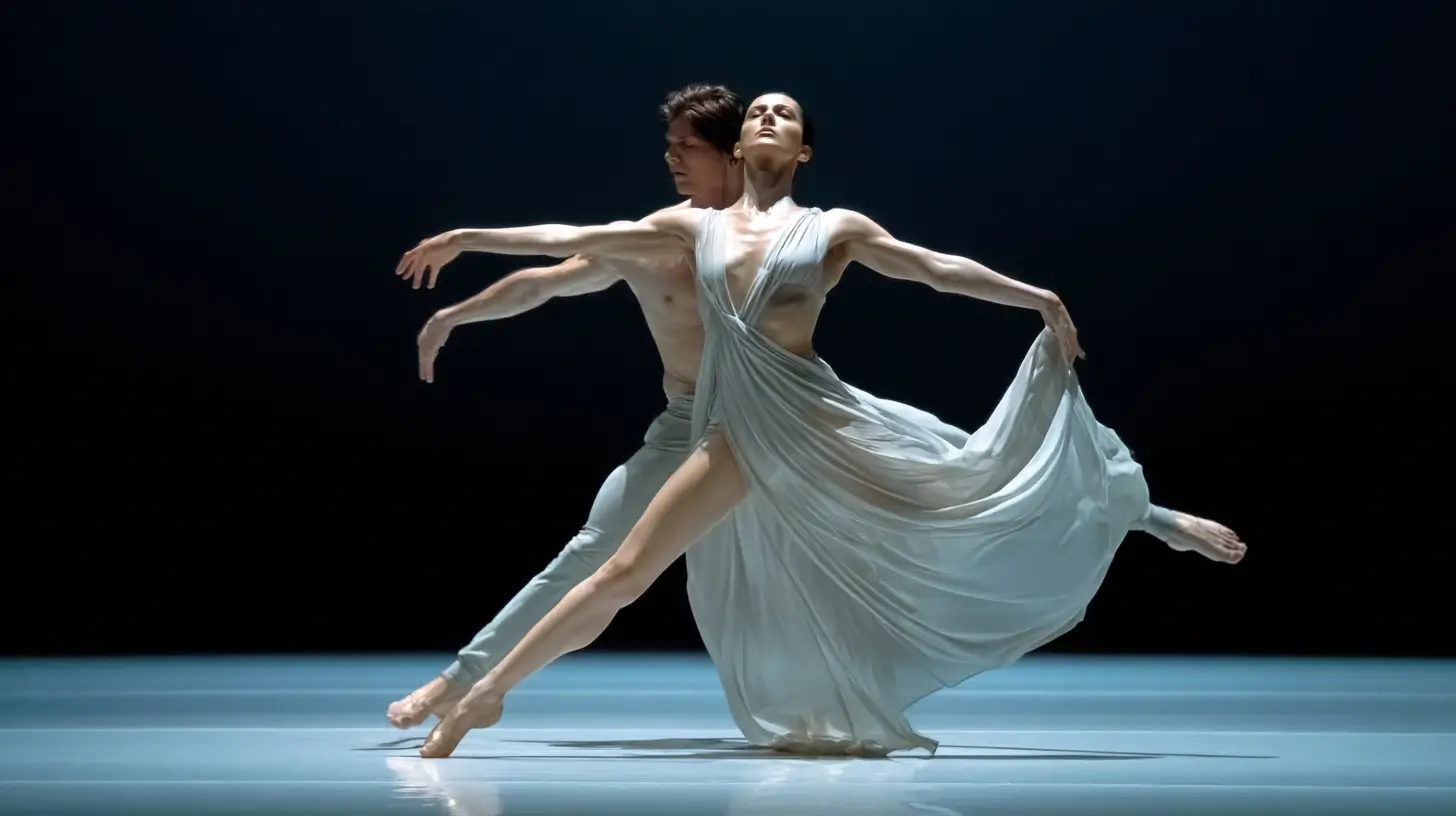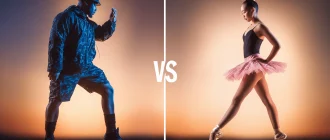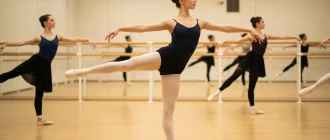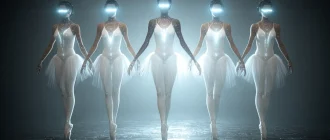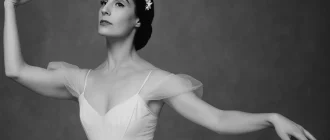Chroma is a groundbreaking ballet by Wayne McGregor that merges classical and contemporary dance. It pushes ballet’s boundaries with innovative choreography and a unique musical score. This article explores Chroma’s origins, choreography, original music, and impact on the dance world, providing a comprehensive overview of Chroma ballet.
After its premiere at the Royal Ballet, Chroma has been performed by various prominent ballet companies worldwide, including the Australian Ballet, emphasizing its importance in the international dance community.
Graceful Insights
- Wayne McGregor’s ‘Chroma’ combines classical ballet with contemporary dance, pushing traditional boundaries through fluidity and expressive movement inspired by nature.
- The choreography emphasizes innovative partnering techniques and dynamic movements, offering a visually striking performance that conveys complex emotional narratives.
- With a unique score blending orchestral and rock influences by Joby Talbot and The White Stripes, Chroma enriches the ballet’s emotional depth. Since its premiere in 2006, it has become a celebrated contemporary work.
Art de Podcast
| Aspect | Details |
|---|---|
| Title | Chroma |
| Choreographer | Wayne McGregor |
| Music Composer | Joby Talbot (original composition) and Jack White III (music from The White Stripes) |
| Premiere Date | November 16, 2006 |
| Premiere Venue | Royal Opera House, London |
| Ballet Company | The Royal Ballet |
| Style | Contemporary Ballet |
| Key Themes | Exploration of human physicality, intensity, and emotional tension. Focuses on the interplay between minimalism and expressionism. |
| Set Design | Minimalist, with a striking white box stage design by John Pawson that enhances the focus on the dancers. |
| Costume Design | Simple and monochrome costumes by Moritz Junge emphasize body lines and movement rather than elaborate designs. |
| Signature Elements | – High physicality and intricate choreography. |
| – Fusion of classical ballet techniques with modern, angular, and athletic movements. | |
| – Music that contrasts classical structures with modern, rock-inspired elements. | |
| Critical Acclaim | Praised for its boldness and innovation, Chroma has been described as a groundbreaking piece that pushes the boundaries of traditional ballet. |
| Notable Performances | Performed worldwide by leading ballet companies, including the Royal Ballet, Boston Ballet, and the National Ballet of Canada. |
| Cultural Impact | It is a landmark work that bridges contemporary dance and classical ballet, inspiring choreographers and dancers to explore new dynamics and athleticism. |
| Duration | Approximately 30 minutes |
| Difficulty Level | Highly demanding, requiring exceptional technique, stamina, and the ability to perform with precision and abandon. |
| Interesting Fact | The ballet’s title, Chroma, refers to color and intensity, symbolizing the spectrum of emotions and physical expressions presented throughout the performance. |
Origins of “Chroma”
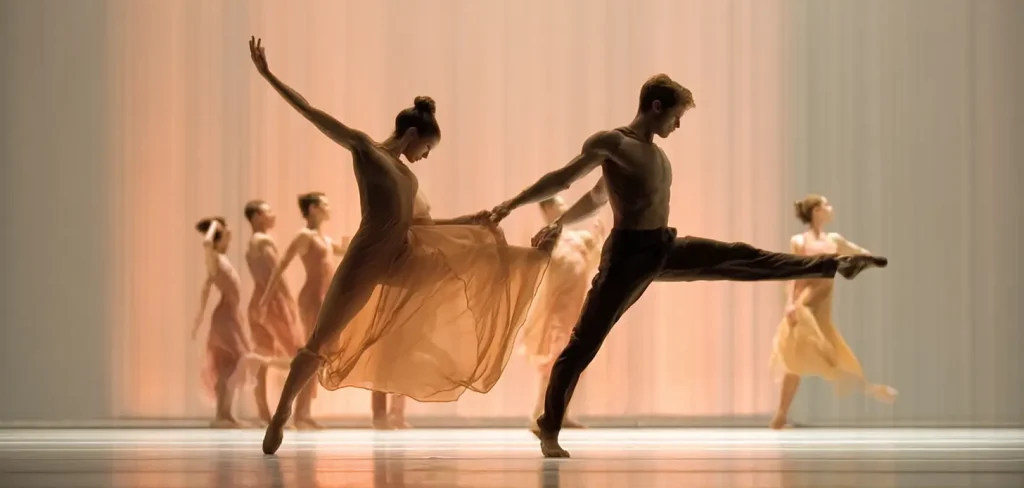
Wayne McGregor is renowned for his ability to blend classical ballet with contemporary dance, creating works that challenge the boundaries of movement and expression. His vision for “Chroma” was no different; he sought to craft an immersive experience that would push ballet’s traditional aesthetics and forms into new territory.
Inspired by the vibrant colors and dynamic movements in nature and contemporary visual arts, McGregor created a ballet emphasizing fluidity and the interplay of color, movement, and emotion.
McGregor’s fascination with the natural world and its ever-changing palette of colors inspired “Chroma.” This interest in vibrant hues and dynamic forms is evident in the ballet’s emphasis on fluid, expressive movements that evoke the beauty and complexity of nature.
Integrating these elements, McGregor crafted a standout ballet that offers audiences a unique visual and emotional experience. Chroma is also significant in the context of Wayne McGregor’s ten years as a Resident Choreographer at The Royal Ballet, marking a milestone in his innovative choreography.
“Chroma” transcends traditional ballet, offering a sensory journey that prompts dancers and viewers to reconsider the possibilities of dance. Its fluidity and seamless movement transitions create a captivating performance that delves deep into human emotion and expression. This innovative approach has established “Chroma” as a pivotal work in contemporary ballet, highlighting McGregor’s talent for blending traditional and modern elements.
Choreography and Style by Wayne McGregor
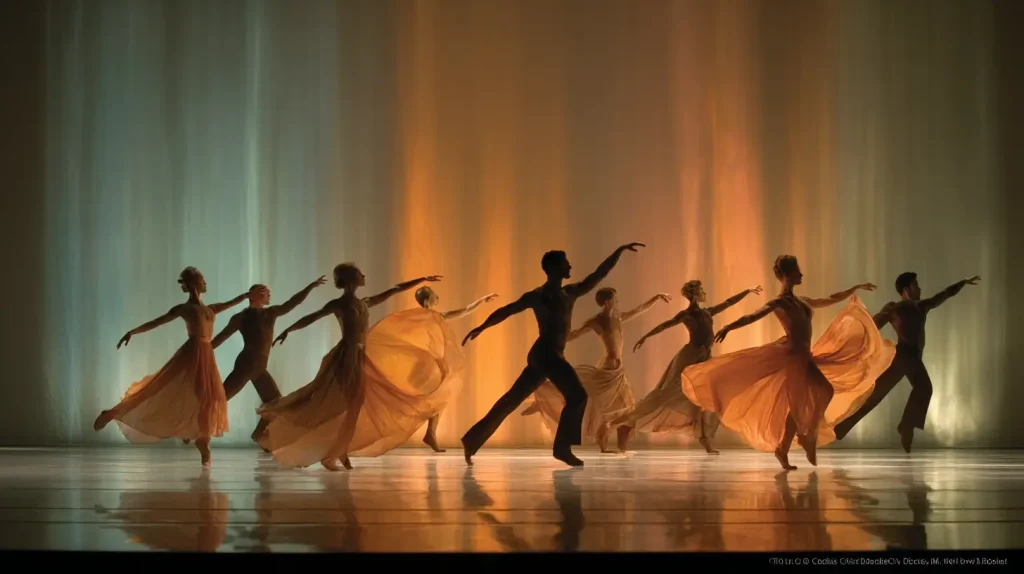
Wayne McGregor’s choreography of “Chroma” is a testament to his innovative approach to dance, emphasizing its kinetic nature and inventive design. Known for his energy-driven choreography, McGregor encourages dancers to explore movements that deviate from traditional ballet lines, creating a dynamic and engaging performance.
This distinctive style of energy-driven choreography is evident in Chroma, where dancers utilize counterbalance techniques to create a dialogue between stability and fluid movement. The result is a visually striking and emotionally resonant piece.
McGregor’s choreography in Chroma also showcases his distinctive approach to ballet partnering. He pushes dancers to challenge traditional pas de deux boundaries by incorporating weight-sharing and off-center movements. Chroma’s intricate pas de deux highlights dynamic shapes and movements, emphasizing the physical and emotional connection between male and female dancers.
Beyond the physicality of royal ballet, “Chroma” emphasizes the expressive capabilities of the human body, illustrating complex emotional narratives through movement. McGregor’s choreography is characterized by fluidity, allowing seamless transitions between dance vocabulary and expressive storytelling through the human body.
This blend of traditional ballet structures with contemporary movement principles creates a technically impressive and deeply moving performance.
Music and Composition
The music for “Chroma” is equally innovative. It features a collaboration between British composer Joby Talbot, a resident choreographer, and the American rock band The White Stripes. Talbot arranged three tracks by The White Stripes, blending orchestral style with contemporary rock influences to craft a score that complements McGregor’s choreography.
This unique mix of classical and modern music elements adds a dynamic layer, enhancing the ballet’s impact.
Chester Music significantly contributed to arranging the music for “Chroma,” helping to shape its artistic vision. Joby Talbot’s original compositions feature dynamic soundscapes reminiscent of cinematic scores and diverse musical moods, creating a rich auditory experience that mirrors the ballet’s visual and emotional complexity.
Talbot and The White Stripes collaborated on an innovative and evocative score, capturing “Chroma” through bold, contemporary sound. The music supports the choreography and enhances the emotional depth of the performance, creating a truly immersive experience for the audience.
Premieres and Performances
“Chroma” premiered at the Royal Opera House on November 17, 2006. The premiere was a significant event in the ballet world, showcasing the innovative choreography and original music that would define the work. The original cast included prominent Royal Ballet dancers, such as Federico Bonelli, Alina Cojocaru, and Tamara Rojo, whose performances were critically acclaimed.
Since its premiere, “Chroma” has been performed by renowned companies globally, including Alvin Ailey American Dance Theater and the San Francisco Ballet. The ballet has graced stages in significant venues worldwide, such as Lincoln Center and War Memorial Opera House, further solidifying its status as a contemporary classic.
World Premiere by Royal Ballet
The world premiere of “Chroma” on November 17, 2006, at the Royal Opera House in London marked a significant moment for Wayne McGregor and the ballet community. Dancers from Alvin Ailey American Dance Theater and The Royal Ballet combined to create a unique dynamic, enhancing the performance’s reception. Reviews praised the innovative choreography and emotional depth, establishing “Chroma” as a groundbreaking work.
The enthusiastic response from critics and audiences at the premiere set the stage for “Chroma” to become a celebrated contemporary ballet. The fusion of classical and modern elements and powerful performances left a lasting impression, solidifying “Chroma” as a pivotal piece in McGregor’s repertoire.
International Stages
Since its premiere, prestigious dance companies have performed “Chroma” worldwide. Notable performances by Alvin Ailey American Dance Theater and the San Francisco Ballet brought unique interpretations to the work, spreading “Chroma’s” influence and introducing it to new audiences globally.
Staged in iconic venues like Lincoln Center and War Memorial Opera House, “Chroma” has cemented its place as a modern classic. Its wide-ranging appeal and adaptability have made it a favorite among dancers and audiences, ensuring its continued relevance in contemporary ballet.
Notable Cast and Collaborations

The original cast of Chroma included distinguished Royal Ballet dancers such as Sarah Lamb, Steven McRae, Eric Underwood, and Jonathan Watkins. Their exceptional talent and dedication brought McGregor’s vision to life, significantly impacting the ballet’s success. Steven McRae and Eric Underwood, in particular, became regular collaborators of McGregor, further contributing to his innovative works.
Architect John Pawson’s minimalist set design also played a crucial role in defining Chroma’s aesthetic. Described as an antiseptic laboratory, Pawson’s design created a stark and captivating backdrop emphasizing the choreography’s physicality and emotional intensity. This collaboration between dance and architecture added a unique dimension, enhancing the performance’s impact.
Awards and Recognitions
Since its premiere, Chroma has garnered numerous awards and recognitions, reflecting its critical acclaim and impact on the dance world. In 2007, it won the Olivier Award for Best New Dance Production, solidifying its status as a groundbreaking work. In 2012, it received the Critics’ Prize at the Golden Mask Awards, further acknowledging its artistic excellence.
The ballet has also won multiple Critics Circle Awards and two South Bank Show Awards, celebrating various performances and contributions to the arts. Additionally, “Chroma” was nominated for a Benois de la Danse award for The Royal Ballet’s 2009 performance and received an International Theatre Institute Award for Excellence in Dance the same year.
These accolades underscore the lasting impact and significance of Wayne McGregor’s work in dance.
Influence and Legacy
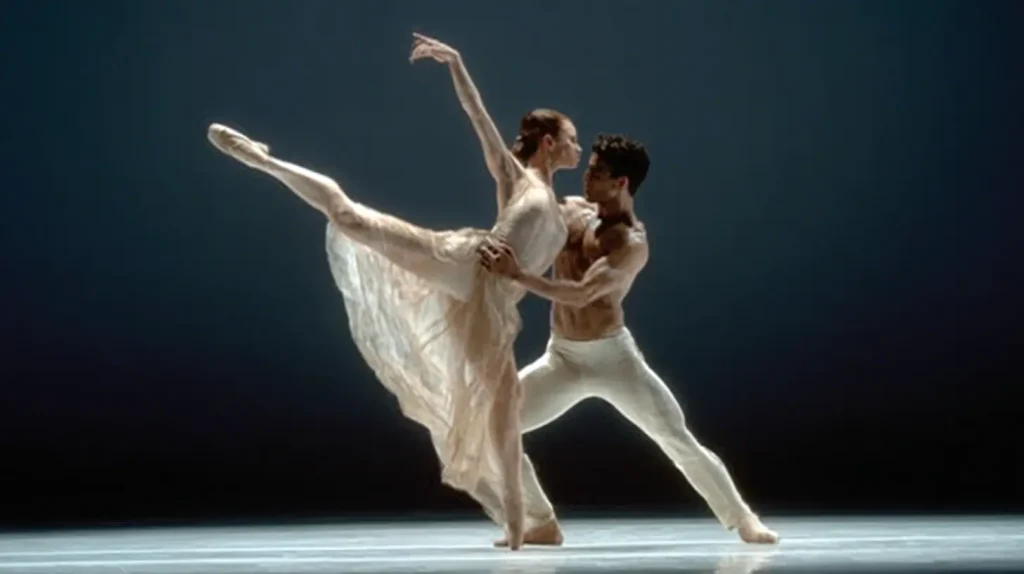
“Chroma” is considered a pivotal work. It inspires new generations of dancers and choreographers by emphasizing physicality and expressiveness in ballet. Wayne McGregor’s innovative integration of contemporary dance elements with classical ballet has fostered a unique style that challenges traditional norms and encourages creative exploration.
His work has sparked discussions on ballet’s evolution, urging dancers to go beyond established techniques and tap into their creative potential.
McGregor’s influence extends beyond “Chroma.” As a resident choreographer and the founder of Random Dance, now Company Wayne McGregor, he has created over 20 pieces for The Royal Ballet, where he has served as Resident Choreographer since 2006.
Notable works like “Woolf Works,” inspired by Virginia Woolf’s writings, showcase his unique approach to classical dance. McGregor’s collaborations with theater, film, and visual arts have expanded traditional dance boundaries, establishing him as a leading figure in contemporary choreography.
Related Works
Wayne McGregor’s innovative spirit extends beyond “Chroma.” His 2012 work, “Carbon Life,” integrates contemporary pop music and dance styles with classical ballet elements, redefining the traditional ballet. The score for national ballet, composed by Mark Ronson and Andrew Wyatt and performed live by a supergroup, adds a dynamic layer, enhancing the ballet’s impact.
The “Carbon Life” choreography incorporates jazz and hip-hop, showcasing McGregor’s ability to blend different styles seamlessly. This thematic and stylistic continuity between “Chroma” and “Carbon Life” underscores McGregor’s commitment to pushing ballet’s boundaries and exploring new creative possibilities.
Behind the Scenes
The production of “Chroma” is as fascinating as the performance itself. The ballet uses stark, minimalist designs to enhance the dancers’ movements, highlighting the choreography’s physicality and emotional intensity. John Pawson’s set design, described as an antiseptic laboratory, creates a captivating backdrop that emphasizes the dancers’ fluid and expressive movements, allowing the choreography to take center stage.
The minimalist design captivates the audience and plays a crucial role in Chroma’s overall aesthetic. The focus stays on the dancers and their movements by stripping away unnecessary elements, creating a powerful and immersive experience. This behind-the-scenes insight reveals the thoughtful choices contributing to the national ballet show’s unique and impactful presentation.
Resume
In summary, Wayne McGregor’s “Chroma” is a groundbreaking work that has redefined the boundaries of ballet. From its origins and innovative choreography to its evocative music and minimalist design, “Chroma” is a testament to McGregor’s visionary approach to dance.
The ballet’s critical acclaim, numerous awards, and lasting influence on the dance community underscore its significance as a contemporary classic. As we continue to explore the possibilities of dance, “Chroma” remains a shining example of the power of creativity and artistic expression.
FAQ
What is the duration and structure of Chroma?
Chroma is a one-act contemporary ballet lasting roughly 25 minutes. Rather than traditional divisions, the piece unfolds in a seamless flow of movement, structured around the shifting moods of its score.
Who are the principal creatives behind Chroma’s production?
Chroma was conceived, directed, and choreographed by Wayne McGregor. The original score was composed by Joby Talbot, with orchestrations by Christopher Austin. John Pawson, costumes by Moritz Junge, and lighting by Lucy Carter designed the stark, minimalist set.
How does the score integrate classical composition with rock elements?
The score combines four original compositions by Joby Talbot with Talbot’s reworkings of three White Stripes tracks. This fusion creates a dynamic sound world that moves between pulsing, electronic-tinted rhythms and more lyrical passages.
What technical challenges do dancers face in Chroma?
Dancers in Chroma are pushed to extreme physical limits: rapid isolations of limbs, unconventional balances, and high-velocity transitions. Female dancers perform entirely off-pointe, adding an extra layer of contemporary technique.
How does John Pawson’s set design contribute to the ballet’s aesthetic?
Pawson’s design is a near-monochrome white box, creating an almost antiseptic canvas. This minimalist environment focuses squarely on the dancers’ bodies and the choreography’s architectural lines.
What role does lighting design play in shaping the performance?
Lucy Carter’s lighting sculpts the dancers and the set with stark contrasts and sharp shadows. Her design shifts the visual tone in tandem with the music, accentuating moments of tension and release.
How did Chroma influence Wayne McGregor’s career?
Chroma’s success—highlighted by an Olivier Award for Best New Dance Production—led to McGregor’s appointment as Resident Choreographer of The Royal Ballet, making him the first contemporary artist and the only choreographer without traditional ballet training to hold that post.
Which notable ballet companies have staged Chroma internationally?
Beyond The Royal Ballet, Chroma has been performed by companies such as the National Ballet of Canada, San Francisco Ballet, Bolshoi Ballet, The Australian Ballet, and Alvin Ailey American Dance Theater.
What makes the choreography of Chroma distinctive within contemporary ballet?
McGregor’s movement vocabulary in Chroma blends classical technique with fractal-inspired, fluid transitions. The choreography emphasizes kinetic architecture—dancers create and collapse spatial structures through their bodies.
How have Critics and audiences received Chromas over time?
Since its premiere, Chroma has drawn widespread acclaim for its daring synthesis of music, movement, and design. Reviews often cite its visceral power, minimalist impact, and how it challenges conventional ballet norms.
Are there official recordings or film adaptations of Chroma available?
An authorized ballet DVD featuring The Royal Ballet’s original production is available, offering high-definition film of the choreography, music, and design as presented at the Royal Opera House.
How can ballet companies acquire Chroma’s performance rights?
Performance licensing for Chroma is handled through the choreographer’s official channels. Companies typically negotiate rights directly with the Wayne McGregor studio or its designated licensing agent.
What training background is beneficial for dancers performing Chroma?
Dancers benefit from a strong classical ballet foundation paired with contemporary and modern technique training, as Chroma demands rigorous alignment and experimental movement quality.
How does the choreography of Chroma reflect themes of human emotion?
Chroma explores extremes of thought and feeling through the dancers’ physicality. Sharp gestures and fluid unisons evoke tension, release, fragmentation, and unity, mirroring the drama of human emotion.
What educational or outreach programs have been associated with Chroma performances?
Several companies mounting Chroma have offered workshops and masterclasses led by cast members or McGregor associates, focusing on contemporary technique, creative process, and the intersection of dance and design.

